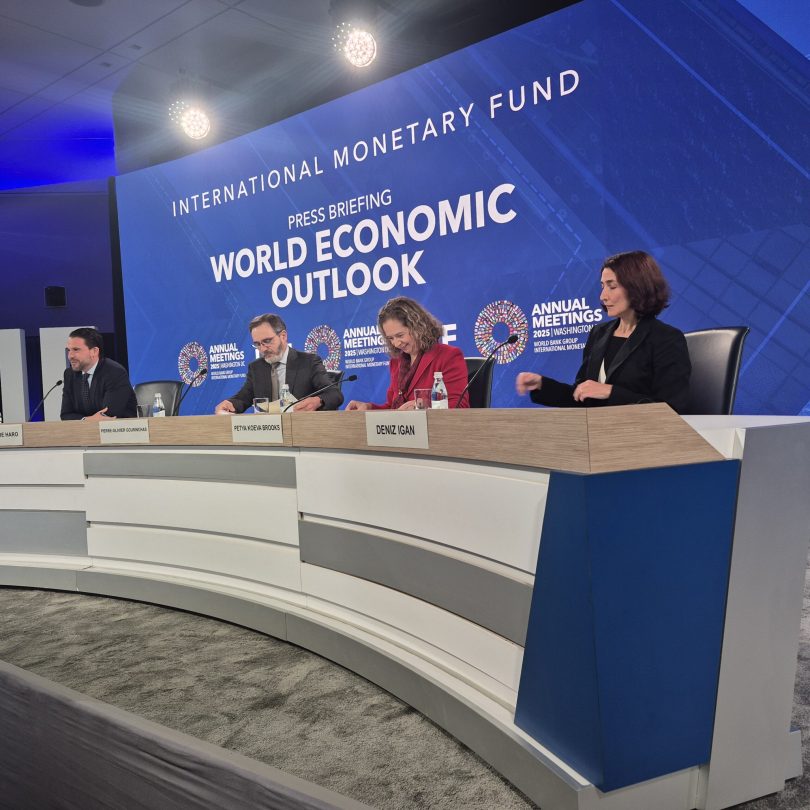.Cites reduced uncertainty, limited exposure to United States tariffs
The International Monetary Fund (IMF) on Tuesday raised Nigeria’s economic growth forecast for 2025 to 3.9 percent, an upward revision of 0.5 percentage point from its earlier projection.
The announcement came during the launch of the Fund’s latest World Economic Outlook at the ongoing World Bank/IMF Annual Meetings, in Washington DC.
The IMF also revised Nigeria’s 2026 growth projection upward by 0.9 percentage point to 4.2 percent, citing improved macroeconomic conditions, better investor confidence, and stronger oil output. According to the Fund, the enhanced outlook reflects reduced uncertainty in the domestic environment and limited exposure to the recent United States tariffs, which have had little direct impact on Nigeria’s economy due to its relatively low trade linkages with the U.S.
The IMF explained that since July, Nigeria’s exchange rate has appreciated, financial conditions have strengthened, and investor sentiment has improved. The Fund added that Nigeria’s fiscal stance remains supportive, while the hydrocarbon sector has benefited from higher oil production and improved security around key installations. “These factors together underpin the stronger growth outlook for Nigeria,” the IMF said.
In addition to the 2025 and 2026 revisions, the Fund also adjusted its 2024 growth estimate for Nigeria to 4.1 percent, up by 0.7 percentage point from the previous forecast. It attributed this to the recent rebasing of Nigeria’s Gross Domestic Product (GDP), which now provides a more comprehensive picture of the economy by capturing a wider range of economic activities, including contributions from the informal sector that were previously unrecorded.
Addressing the regional outlook, the IMF said Sub-Saharan Africa continues to show resilience supported by macroeconomic stabilization efforts and reform momentum in key economies such as Nigeria and Ethiopia. It, however, warned that resource-dependent and conflict-affected countries still face significant headwinds. The Fund noted that low-income economies are struggling with widening per capita income gaps compared to advanced economies, and it urged countries to strengthen institutions, double down on reforms, improve revenue mobilization through tax reforms, and enhance debt management and transparency to unlock growth potential.
The IMF further highlighted that while global trade developments continue to shape the economic outlook, new drivers such as technology investment and fiscal policies are increasingly influencing growth patterns. The Fund said that although U.S. tariffs announced earlier this year have had some impact, the overall effect on global growth has been modest, with projections standing at 3.2 percent for 2024 and 3.1 percent for 2025. It attributed the limited impact to a combination of smaller-than-feared tariff shocks, non-retaliatory responses by most countries, and the private sector’s agility in rerouting supply chains.
However, the IMF cautioned that the outlook remains fragile amid rising global risks. It cited four key downside risks: the potential overheating of the ongoing artificial intelligence–driven tech investment boom, continued weaknesses in China’s property sector, insufficient progress in rebuilding fiscal space amid high debt and low growth, and rising political pressures on central banks to ease monetary policy prematurely. The Fund warned that undermining central bank independence would erode credibility, fuel inflation, and destabilize economies.
Despite these challenges, the IMF noted that the global outlook could brighten if trade tensions ease, new bilateral and multilateral trade agreements emerge, and governments pursue policies that promote productivity, investment, and innovation. It said that artificial intelligence also holds significant promise for boosting productivity if accompanied by sound economic management and institutional reforms.
Overall, the Fund’s latest projections indicate growing optimism about Nigeria’s medium-term outlook, supported by improved domestic stability, ongoing reforms, and favorable oil market conditions.

